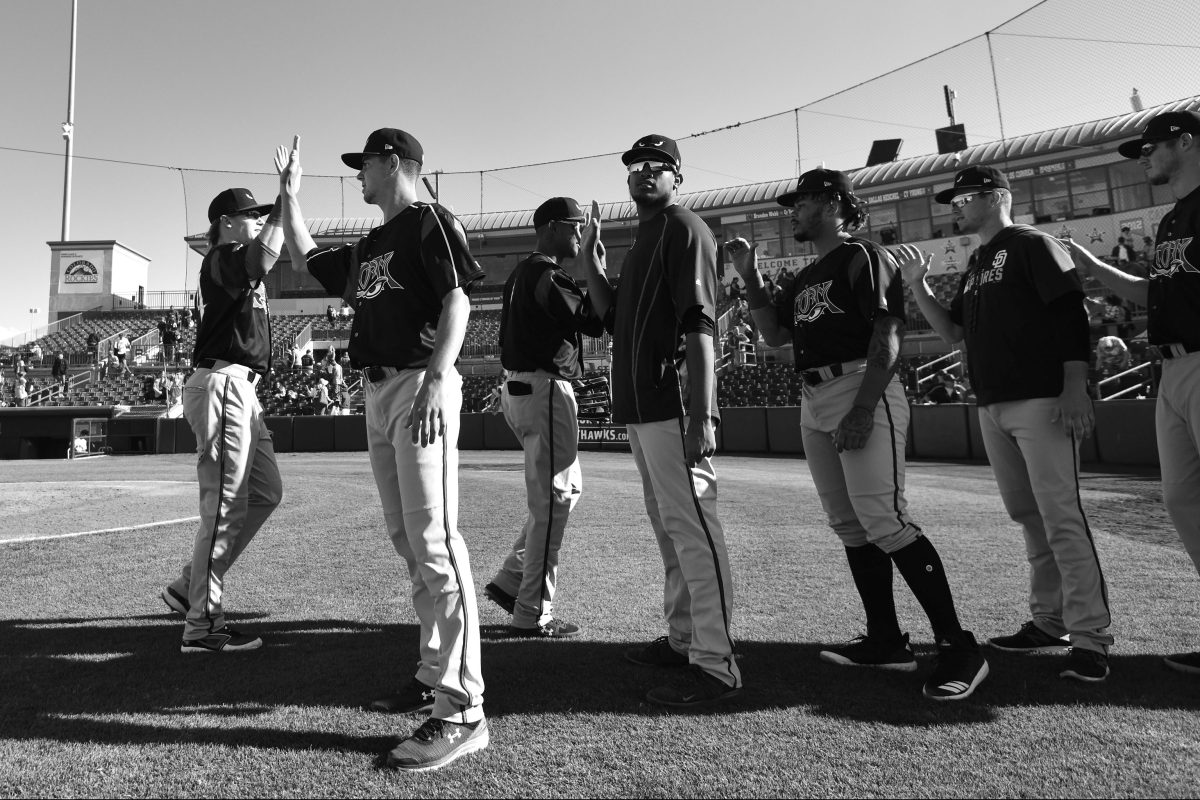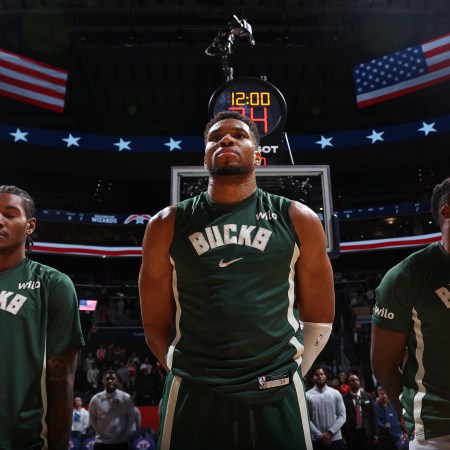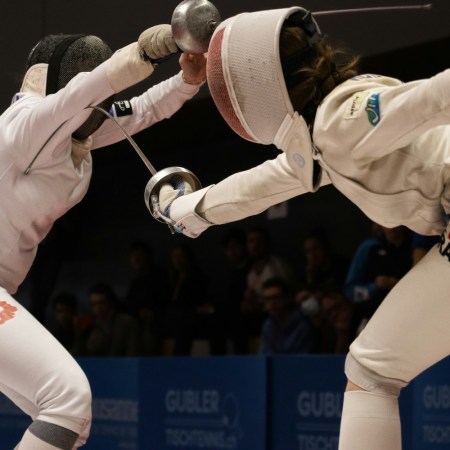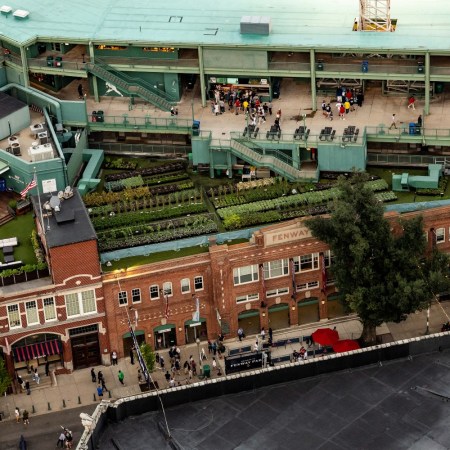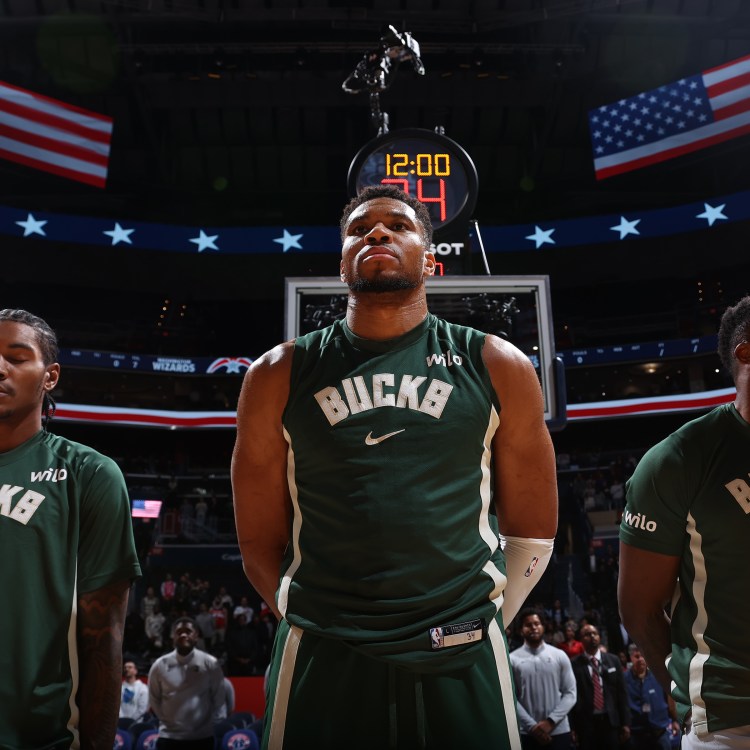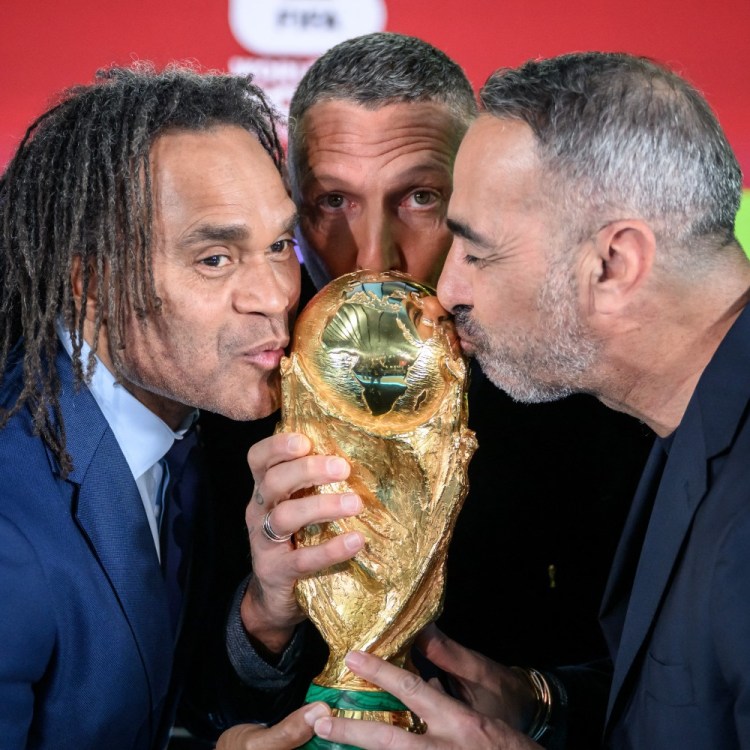When a baseball player steps into a clubhouse for the first time as a professional after years of training and competition, having invested thousands in gear, travel accommodations and league fees, a cascade of sunny pride most assuredly washes over their body. They likely excelled at the little league, high school and oftentimes college levels, but being paid to play the game they love is a whole other accomplishment — and a lengthy leap toward the status of a Major Leaguer, the ultimate goal. However, for many minor league players, the shine of that chest-out, head-high moment is quickly muddied by unsavory working conditions and scant compensation.
“The switch flips pretty quickly from the starry-eyed view of how romantic the game can be to the real world,” says Simon Rosenblum-Larson, a 25-year-old pitcher in the Tampa Bay Rays minor league system. After the franchise drafted him in 2018 as a 19th-round pick, he agreed to an initial seven-year contract, the league’s standard, and was assigned to “rookie ball,” the lowest level of the minors. He says his first paycheck was $550 before taxes for two weeks of work. “You look down at that paycheck, you pay your clubhouse dues, whatever bills you have to pay, and you have no money left,” Rosenblum-Larson says.
Trevor Hildenberger, 31, another minor league pitcher, says in his first season of rookie ball eight years ago with the Minnesota Twins organization, he was required to live in team-owned dorms with a roommate and no kitchen. Three daily meals were supplied at designated times in a cafeteria for a fee of $17 a day. “If you needed a late snack or whatever, you were on your own,” he says.
Hildenberger cashed a $185 check every two weeks during that six-month season, he says. Once travel, workouts and other activities requiring their time were factored in, Hildenberger and his teammates deduced they earned an hourly rate of roughly $2. To put that figure in perspective, the Los Angeles Times ran an in-depth exposé of criminal conditions in Southern California sweatshops in 2017 under the designed-to-shock headline “Behind a $13 shirt, a $6-an-hour worker.”
In the offseason, Hildenberger moved back in with his parents and sold equipment at a nearby sporting goods store to make ends meet and fund his playing career. “You don’t realize how expensive training is until it’s not free in college anymore,” Hildenberger says. “You gotta pay gym fees and I had to pay for my own supplements and baseballs — they don’t give you any baseballs.”
His daily schedule: Wake at 6 a.m., lift weights, work an eight-hour shift selling sporting goods and, if there was still enough light out, get some throwing in. “This is not what I imagined as a professional athlete,” he thought to himself. “My organization should be investing in me if they want me to succeed and become the best player possible.”
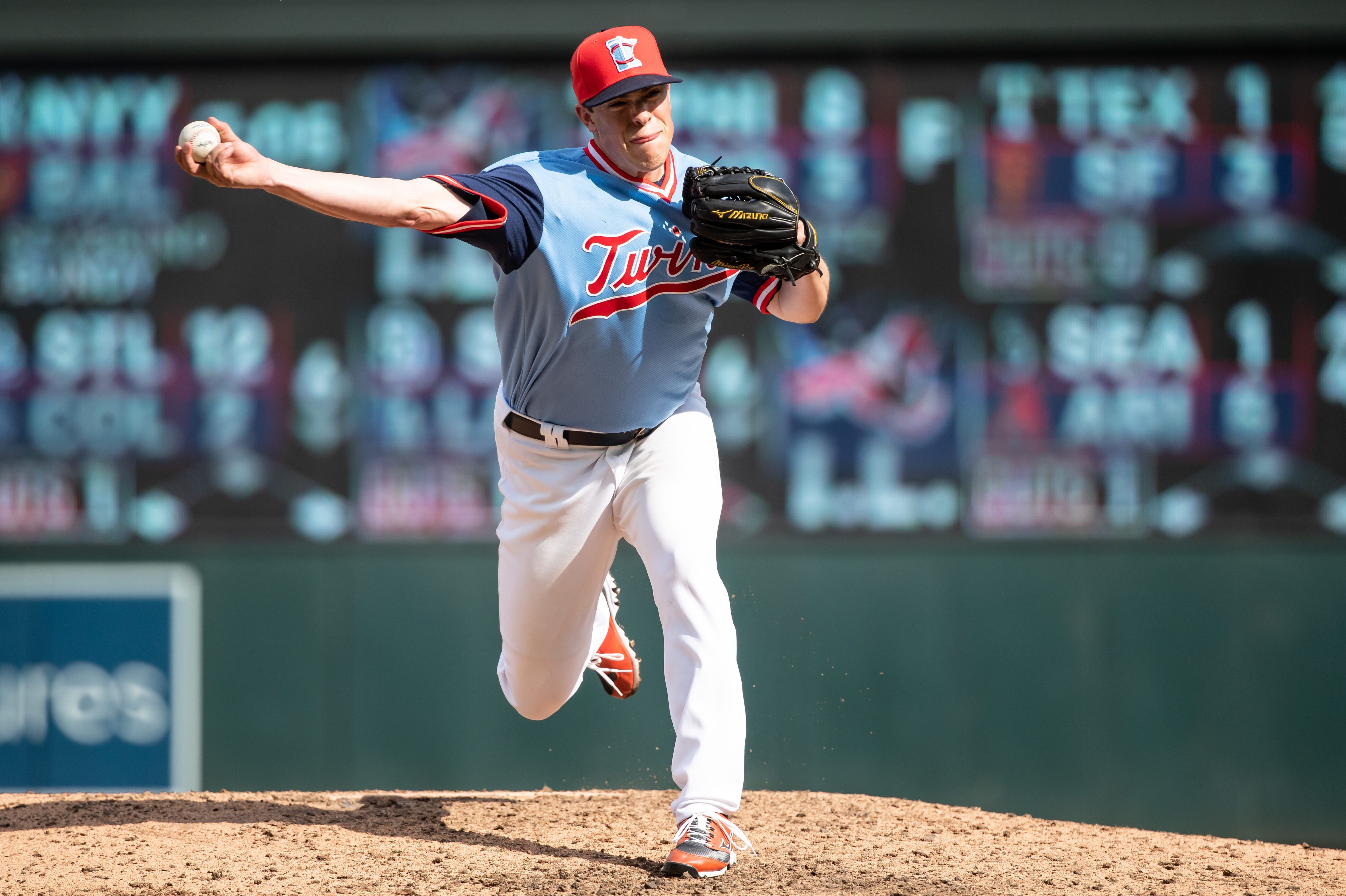
At the risk of career sabotage, a growing number of minor leaguers are echoing this sentiment and challenging MLB-favorable laws that permit below-poverty-level wages and outlandish labor expectations for young ball players with a dream. Outreach and advocacy organizations are cropping up on the players’ behalf and politicians are proposing pro-player legislation. The stakes, some say, are no less than professional baseball’s complete immolation, propagated by MLB’s own policies that are in place strictly to boost its bottom line. The concept of securing a prosperous future through fostering the finest on-field product, meanwhile, comes in a distant second place.
“The way that the league is thinking about minor league issues is very short-sighted,” says attorney Harry Marino, a former minor league pitcher, who’s now the executive director of Advocates for Minor Leaguers, a nonprofit dedicated to improving working conditions for minor league ballplayers. “Treating players as poorly as you can get away with is bad for public relations, bad for their player development and it’s just bad for the game in ways that are probably going to take a longer time to materialize.”
If conditions for minor league players don’t profoundly improve with better pay, increased resources devoted to training and other upgrades, Marino foresees a future in which aspiring ballplayers choose to engage in different sports at young ages rather than toil so stressfully for so long for a mere chance at long-term financial security. More minor leaguers could quit baseball before realizing their full potential and Marino says fans may turn away from the game out of anger over the mistreatment of minor league players. This, along with cultivating a lesser product through the mishandling of its talent, could exacerbate an already widely publicized, long-standing problem MLB has with fan interest levels. Some data suggests this issue is particularly stark in younger demographics, the groups whose attraction and retention are most important for brand sustainability.
“For goodness sakes, like, Starbucks even trains their employees,” says Nola Agha, professor of sport management at the University of San Francisco, who believes poor minor league player treatment is hurting professional baseball. “You have to train them and you have to get them up to speed so that you have highly skilled workers that can produce.”
Not only are Starbucks trainees paid a salary, they also earn tips. After a push for change from unionized workers, this May the company announced it was also doubling the length of its training program for new baristas. Agha says MLB, which assumed complete control of the minor leagues in 2021 after decades of a partnership that allowed for some minor league autonomy, is taking the opposite approach to talent training. While MLB’s brand name touts its baseball product as the finest in the world, Agha defines the minors as a “development league,” as well as a talent “pipeline” and a “supply chain.” Yet that is the area where MLB team owners, she says, are “skimping.”
In 2019, just a year into his professional baseball career, Rosenblum-Larson co-founded an organization helping to fill in the wage gaps for minor league players, More Than Baseball. The group does so primarily through fundraising initiatives, such as its partnership with a footwear company to develop customized cleats for Major Leaguers. Players then wore them on big league ballfields, spreading awareness of the minor leaguers’ pay problem. Current and former MLB stars such as Daniel Murphy, Adam Wainwright and Max Scherzer have donated to More Than Baseball, Rosenblum-Larson says. He also discloses that the Players Trust, a community outreach group coordinated by the MLB Players Association union, recently contributed $500,000 to the organization.
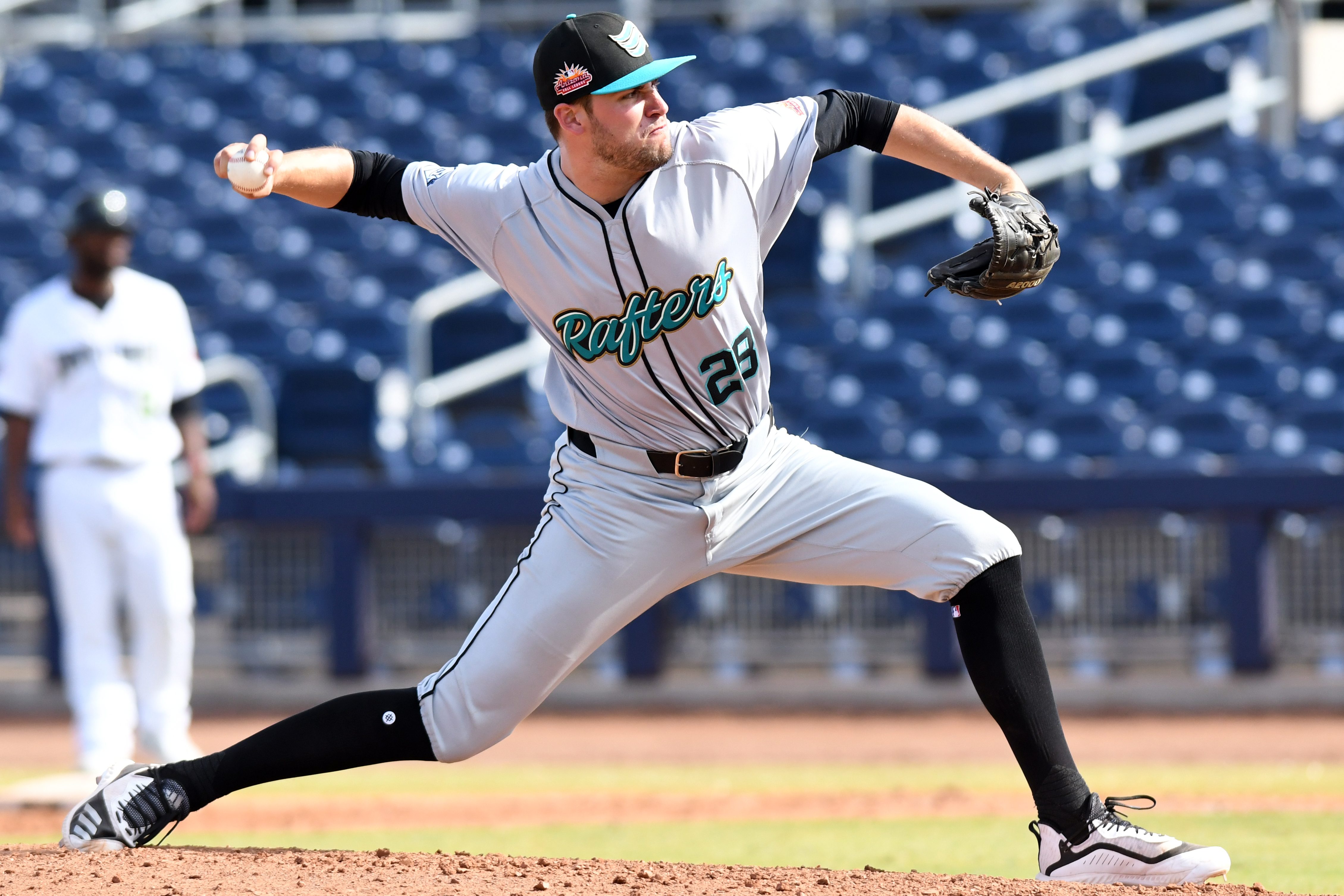
Rosenblum-Larson, who this past April wrote a scathing indictment of MLB’s treatment of minor league players for the Washington Post, is challenged emotionally by railing against overlords of the game he’s always loved and wants to play at the top level one day. “I’m pro-player in every possible way, and I feel comfortable speaking out because I’ve lived the player experience,” Rosenblum-Larson says. “The business side? It’s destroying baseball. Owners are in a position where they’re undermining the future of the game.”
While ballplayer salaries improve annually over the course of that aforementioned initial seven-year minor league contract, the increases are slight. According to Rosenblum-Larson’s Post op-ed, salaries for rookie ball players average about $4,800 across the six-month baseball season, while those at the AAA level, which is just below the major league level, earn $14,000. He observed in the piece that minor league players are not paid during the offseason even though they’re expected to stay in shape. They’re also not compensated for spring training and other required team training programs. Minor leaguer work days, Rosenblum-Larson tells InsideHook, run eight to 10 hours, six days a week, plus travel time to away games. “A number of minor league players are making below the federal minimum wage of $7.25 an hour,” Rosenblum-Larson says. “No worker, regardless of their profession, should be making not enough to put food on the table at the end of the day.”
That is arguably even more true for workers in an industry that generates around $11 billion a year in revenue.
Referring to MLB team owners, Agha says, “The question is not their ability to pay, it’s a willingness to pay.” Agha, who’s also an advisor to More Than Baseball, observes that players in minor league systems associated with the NHL and NBA are better compensated than baseball players, even though those major pro leagues generate less revenue than MLB does. The NHL takes in $4.4 billion in yearly revenue; the NBA has recently pulled in as much as $8.8 billion. Yet, according to Glassdoor, the floor for a hockey minor leaguer’s yearly earnings is $9,695, with an average of $81,238. The NBA’s G League, which runs for five months, pays its players at least $35,000, reports the Sporting News. They can also make up to $500,000.
Once minor league baseball players exceed seven years of service time, they hit the open market as free agents. Their wages, says Rosenblum-Larson, get “quite a bit better at that point,” reaching levels he believes are “representative of the free market value of a lot of these players.”
In a statement sent to InsideHook, MLB acknowledged there have been “longstanding issues that have impacted minor league players for decades,” and characterized its minor league takeover in 2021 — which included the elimination of dozens of teams — as the building of a “modernized player development system.”
“As part of the new system, teams increased salaries [between] 38-72% for 2021, improved facilities, provided more amenities and better clubhouse conditions, removed all clubhouse dues and reduced in-season travel with better geographical alignment,” the statement said. The league has also adopted a new policy requiring teams to provide furnished housing accommodations, which include amenities such as Wi-Fi, for up to 90% of minor league players. “The clubs are confident that these investments will help ensure that minor league players have every opportunity to achieve their dreams of becoming major leaguers,” the statement said, before adding that MLB also dishes out approximately $450 million in signing bonuses on an annual basis to players entering the development system.
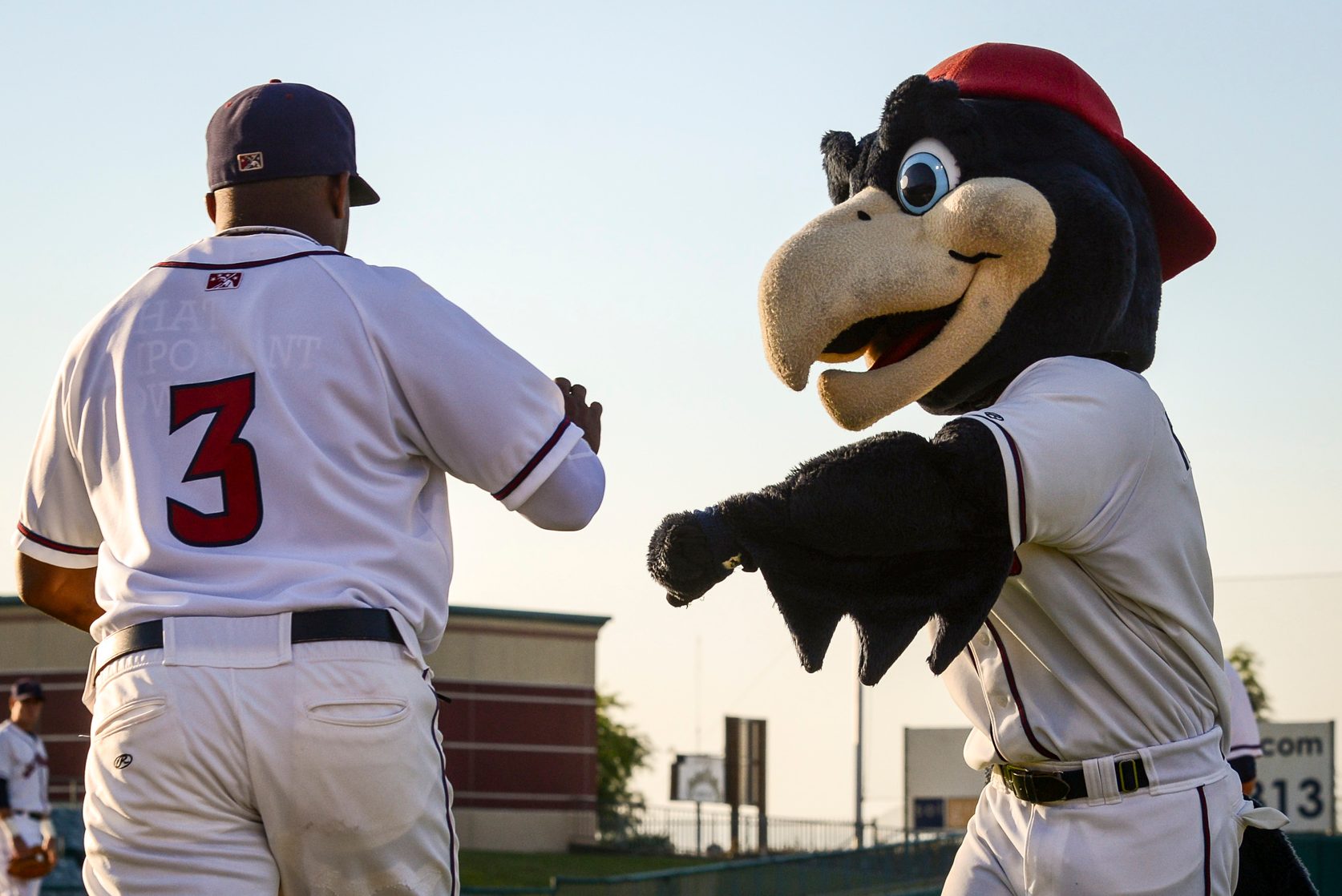
Rosenblum-Larson says he’s seen this league statement in press clippings before, and he’s not terribly impressed by the developments outlined therein. “They love to pat themselves on the back for marginal improvements,” he says. “That percentage [wage] improvement is not a lot when you’re talking about such low salaries.” With that new math integrated into paystubs, many players at the lowest levels of the minor leagues went from making $1,150 a month to now making $1,600 a month, according to Rosenblum-Larson.
Part of the reason MLB has paid its minor league players such low salaries, my sources tell me, is because for generations young players simply accepted the sacrifice they had to make to become major league ballplayers, which comes with the promise of far more lucrative contracts. But as Rosenblum-Larson notes: “If you like your job, that doesn’t give your employer license to pay you a poverty-level wage.”
Player attitudes began to change with the rise of social media, which Agha says “has been incredibly powerful in letting anyone who’s willing to listen understand this bizarre employment situation for minor leaguers.” With platforms like Twitter, player grumblings were more easily amplified. Then came the 2014 class-action lawsuit against MLB, filed on behalf of minor league players, led by minor-leaguer-turned-lawyer Garrett Broshuis. The suit, Senne vs. Major League Baseball, charged MLB with violating federal wage laws and forcing minor leaguers to live in poverty. “[W]hile major leaguers’ salaries have increased by more than 2,000% since 1976, minor leaguers’ salaries have, on average, increased only 75% since that time,” said a suit filing. “Meanwhile inflation has risen by more than 400% over that same time period.”
Among additional allegations, the filing also said minor league players “receive no overtime pay and instead routinely receive less than minimum wage during the [six-month] championship season.”
Broshuis did not answer a request for an interview with InsideHook perhaps because, as one source agrees, litigation in the class-action suit was ongoing. However, in 2018 Broshuis spoke to SB Nation and outlined some of the disheartening conditions in the minor leagues that drove him to take action against MLB. “You have the batboy in some cases making more money per game than the first baseman is making,” he said. “You’re cramming six guys into a two-bedroom apartment just to make ends meet and split the rent as many ways as possible. You have players sleeping on futons in people’s basements because a host family saves you a lot of money. Host families are great, but why are we asking people in the community to take in professional baseball players in a $10 billion industry?”
Marino, the attorney who co-founded Advocates for Minor Leaguers, traces much of the rising wave of minor league worker empowerment back to Broshuis’s case filing. With the arrival of COVID-19, MLB canceled the 2020 minor league baseball season altogether. Less than a year later, MLB restructured the minors, cut 42 teams out of the system and eliminated, according to some estimates, around 1,200 jobs in doing so. A writer for Defector calculated that the move saved MLB $9 million a year, a mere bag of shells for its billionaire owners. “Those two things in tandem really made players understand in a more palpable and tangible way that they didn’t have any power in this system,” Marino says.
But some people who are in positions of power increasingly have the players’ backs.
On the day the Major League Baseball Players Association and the league struck a deal to end this past winter’s player lockout, Senator Bernie Sanders announced the introduction to Congress of his “Save American Baseball Act.” Its goal is to end MLB’s antitrust exemption, which was put in place in 1922 when the Supreme Court ruled the league’s business did not qualify as “interstate commerce.” Thus, MLB was not beholden to the Sherman Act, which is in place to eliminate monopolies. As one writer recently put it in an op-ed, the Supreme Court essentially argued that “because ground balls don’t cross state lines, it could not intervene.” Sanders likened MLB owners to “oligarchs” in a statement and said the league’s antitrust exemption does not allow for competition in the industry, which would benefit consumers — i.e., fans — as well as players. Sanders and his bill are awaiting a Congressional Judiciary Committee hearing.
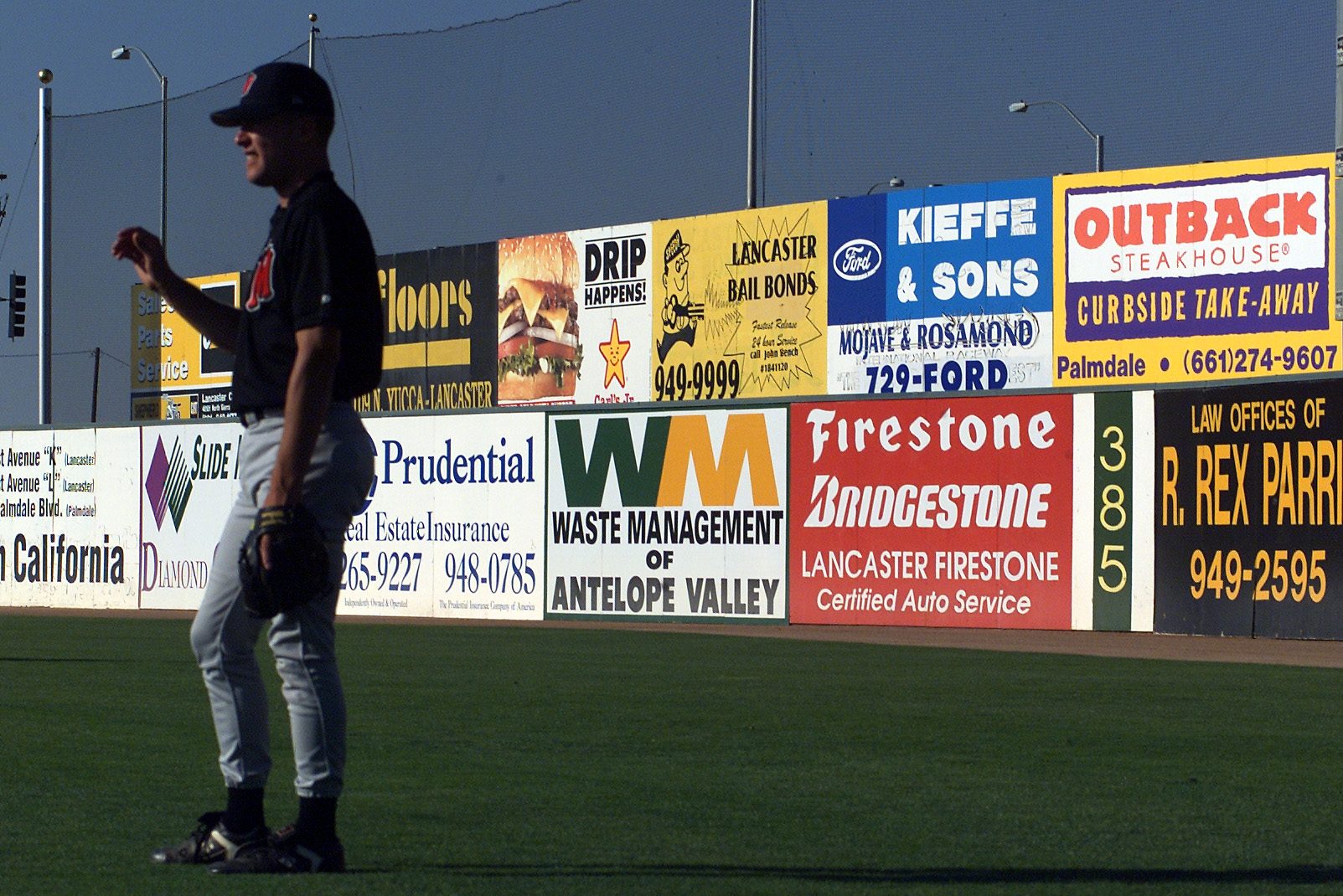
Just a few days after Sanders announced his bill, State Senator Josh Becker introduced a Minor League Baseball Players’ Bill of Rights to the California State legislature. Along with increased wages and generally improved labor practices for California minor leaguers, the bill sought to cut the initial minor league contract from seven years to four, allowing players to become free agents sooner and test the open market for their services.
Like countless state laws before it, Becker’s proposed legislation could have inspired broader legal changes, in this case to the minor league system. (In a Twitter thread underneath Becker’s initial tweet about the bill, the Chair of the New York State Senate Committee on Labor, Jessica Ramos, said her state’s legislature was “already working on” a similar policy.) Becker’s bill also had its sights set on mitigating the effects of the “Save America’s Pastime Act,” which allows MLB to view minor league players as “seasonal employees” and provides the league an out when it comes to paying minor league players overtime for 40-plus-hour workweeks. Passed in 2018 during the Trump presidency, it was a piece of legislation MLB lobbied for over the course of years in the wake of the Broshuis class-action suit.
“Today, Minor League players on a Single-A team are paid $500 a week during the [six-month] championship-playing season; Double-A team members, $600 a week; and Triple-A team members, $700 a week,” Senator Becker said in a statement announcing the proposed bill. “Most minor leaguers are paid less than $12,000 a year. An annual income of $13,590 for a person living alone is considered poverty level under 2022 federal guidelines.”
The minor leaguers’ Bill of Rights did not get past an initial committee hearing in the California state legislature, which disappointed Becker bitterly.
“Unfortunately, California missed a chance to establish a Bill of Rights for Minor League Baseball Players,” Becker said in a statement to InsideHook. “Although my Senate Bill 1248 will not go forward, I’ll continue to support fair contracts, fair wages and fair treatment for minor league baseball players under contract with teams affiliated with the multibillion-dollar organization that is Major League Baseball — as I support fair contracts, fair wages and fair treatment for all Californians.”
Still, Becker raised awareness about the issue through far-reaching media attention. Marino, who helped draft the bill alongside other members of his Advocates for Minor Leaguers organization, says actions like this paired with greater awareness and public protests by minor league players have put MLB owners “really, really on their heels.” As evidence, he cites the league’s revamping of its housing policy as well as the Arizona Diamondbacks franchise addressing air quality issues during the 2021 wildfire season in Northern California. Smoke was blowing through Reno, Nevada, home to a team minor league affiliate and protocol changes were made, Marino says, at the prompting of Advocates for Minor Leaguers.
“There are all kinds of circumstances in which having a group that is willing to go toe-to-toe with the league on these [issues] is not only going to lead to big picture changes, like housing, increased pay if we get there…but also these little things,” Marino says. He adds that his group also acts as “a deterrent” to MLB exploitation of minor league players.
Marino’s feeling that MLB has grown worried over at least the perception it doesn’t treat minor league players well is further supported by a March ruling by a federal judge made in the run-up to the June 1, 2022 trial date for Senne vs. Major League Baseball. The judge said minor league players should be classified as employees across an entire calendar year and that spring training programs and travel time should be considered work hours. As a result, MLB was ordered to pay $1.9 million in penalties. Marino says the ruling will “have a positive impact on players for years to come.” On May 10, Senne vs. Major League Baseball was settled before going to trial. Settlement details have not yet been released, but people on the side of the players feel as though it’s a victory.
“I’m extremely pleased the Minor League players and MLB have reached a settlement in principle in the players’ long battle to secure a living wage and fair treatment,” State Senator Josh Becker tells InsideHook. “With my legislation, we hoped to call attention to the long struggle and mistreatment of minor league baseball players. I’m glad that fairer compensation is getting done. In the future, I’d like to address other issues like the length of the players’ binding contract, which is currently seven years, and making sure players have name, images and likeness rights. While I wasn’t successful in doing that this year, I hope to be successful in the future. For now, this is a moment of celebration for Minor League baseball players.”
Others in and around the game also have a hopeful outlook that conditions for minor leaguers will improve over time. Another More Than Baseball advisor, Chase d’Arnaud, who spent the bulk of his 12-year professional career in the minors and documented some of his hardships shuttling from team to team on various levels in a documentary series called Journeyman, says, “It’s good to see that things are trending in the direction that they are now.”
In d’Arnaud’s experience playing for several franchises, he observed that various organizations were at different points of developing better labor practices directed at minor league players. Some teams can do better in his mind, but he calls the San Francisco Giants, a franchise he spent time working for, “extremely classy.” He recalls that Bobby Evans, the general manager of the big league club while d’Arnaud was in the system, was “very caring” and “very compassionate toward his players.” Evans helped youngsters with housing, says d’Arnaud, and provided airfare to family members who wanted to attend a Giant player’s MLB debut. The franchise was also among the early adopters of pay increases for minor leaguers, d’Arnaud notes.
When asked what further changes he’d like to see MLB initiate to address minor leaguer working conditions, he says, “The things that I’d like to see are already happening, to be honest.” Teams devote more resources to developing players’ “mental skills,” he says, and have built AAA-level video teams that supply players with game footage to help them make adjustments to their performance and forge plans for opponents. “Minor leaguers are starting to get more of that good stuff,” d’Arnaud says.
Others, including d’Arnaud’s More Than Baseball advisor compatriot Agha, say more needs to be done to ensure that minor league players are compensated in ways commensurate with their dedication to their revenue-generating jobs. She believes MLB should, first and foremost, pay minor leaguers a living wage and, since they’re expected to keep in shape year round, compensate them with a salary distributed across 12 months.
“The biggest change that needs to happen, honestly, is if minor league baseball players unionized. They would have the ability to collectively bargain with the only employer in the land for what they want their pay and their working conditions to be,” Agha says. “That would finally give them some power in this relationship where they have absolutely none right now.”
The Charge will help you move better, think clearer and stay in the game longer. Subscribe to our wellness newsletter today.
